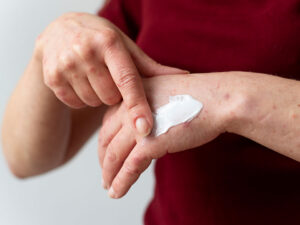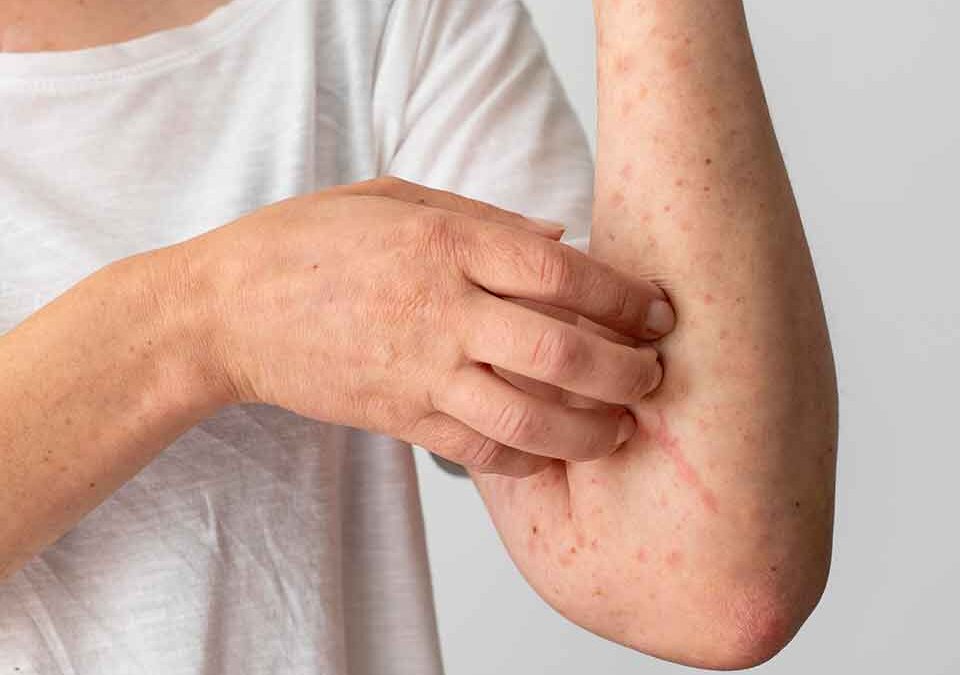
Can Bariatric Surgery Help Cure Diabetes?
September 7, 2022
Is Oatmeal A Healthy Breakfast For Diabetes? | Diabetes Under Control
September 7, 2022Acanthosis nigricans and other skin rashes are more common in diabetics. Hyperglycemia, or high blood sugar, is frequently to blame. Prediabetes can also manifest as a rash. Once blood sugar is under control, many rashes related to diabetes go away. Skin issues that can cause serious infections can be avoided with proper diabetes management and skin care.
Depending on the type and cause, diabetes rashes can have various appearances. On the backs of their hands, people with diabetes occasionally get tight, thick, waxy skin. The skin can occasionally thicken on the forehead and toes. The finger joints become stiff and are unable to move normally. Rarely, elbows, knees, or ankles also become stiff. About one-third of people with type 1 diabetes develop the disease known as digital sclerosis.
Diabetes Rash – Things you Must Know!
Diabetes has an impact on many body parts, including your skin. A skin rash or other skin issue will reportedly appear in 1 in 3 diabetics (Type 1 or Type 2) at some point.
Diabetes increases the likelihood of having dry, itchy skin compared to those without the condition. Additionally, other skin conditions linked to diabetes are more likely to affect you.
Other Skin Conditions People with Diabetes are Susceptible to

- Reactions: Oral diabetes medications or insulin injections may cause allergic reactions in diabetics. You might experience swelling (urticaria), hives, or a rash at the injection site or elsewhere on your body. If you suspect an allergic reaction, consult a healthcare professional.
- Infections caused by bacteria: People with diabetes are more likely to develop bacterial skin infections. You could get bacterial infections deep under the skin or in the glands on your eyelids (sty) (boils and carbuncles). Skin that is infected may be painful, hot, red, and swollen. Antibiotics are required to treat the infection.
- High blood sugar levels and specific skin conditions can result in dry, itchy skin. Your lower legs might itch the most if you don’t have good blood flow to them. Moisturizers are beneficial.
- Candida albicans is a type of yeast that typically causes fungal infections in diabetics. You’ll have itchy, moist areas covered in small, red blisters or scales. Skin folds, such as those in the armpits and groyne, between the fingers and toes, under the breast, and around nailbeds, are frequently affected by a skin fungus. Jockey itch, athlete’s foot, and ringworm are examples of common fungal infections. Antifungal drugs may be beneficial.
How to Avoid Skin Problems in Diabetes?
Maintaining blood sugar levels within the range advised by your healthcare provider is the best thing you can do to avoid skin issues. Taking care of your skin properly can reduce your risk of developing a skin rash, an infection, or a wound that is difficult to heal.
Follow these recommendations to avoid diabetic skin complications:
- Check your skin daily for rashes, redness, infections, or sores.
- In the shower, use a moisturising soap and warm (not hot) water. (Skin dries out after bathing in a tub.)
- Drinking plenty of liquids will help you stay hydrated and maintain healthy skin.
- Avoid rubbing when using a towel to dry the skin, and make sure to dry in between the fingers, toes, and skin folds.
- After taking a shower, apply fragrance-free moisturisers while your skin is still damp and supple. To help skin retain moisture, look for creams and ointments (not lotions) that contain ceramide.
Sources:
https://my.clevelandclinic.org/health/articles/12176-diabetes-skin-conditions
https://www.healthline.com/health/type-2-diabetes/skin-problems#digital-sclerosis
https://diabetes.org/diabetes/skin-complications




